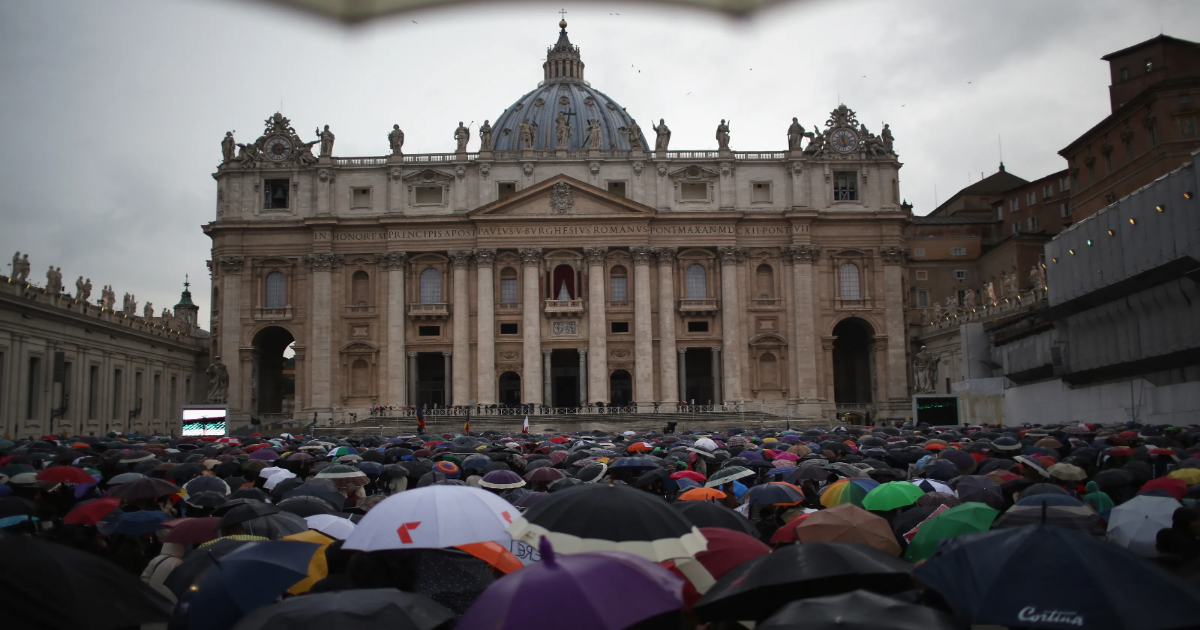
With the passing of Pope Francis, who presided over the Roman Catholic Church and its estimated 1.4 billion followers for 12 years, attention now turns to the selection of his successor.
The decision is made through a time-honored process known as the conclave, which the Vatican announced will start on May 7. The conclave is an election conducted in secrecy behind the locked doors of the Vatican’s Sistine Chapel.
Conclaves are held only when the papacy is vacated, typically upon a pope’s death or retirement. When Pope Benedict XVI, citing age and faltering health, stepped down from the post in 2013 after eight years as pontiff, it was the first time any pope had done so in nearly six centuries.
The resignation of Benedict, who died in 2022, prompted the conclave that elected Pope Francis as head of the church. Francis, 88, died of a stroke on April 21, Easter Monday, after a long respiratory illness.
Soon, the College of Cardinals, the church’s most senior members and the acting head of the church until a new pope is selected, will convene to choose the new pontiff. Only those under age 80 are eligible to vote; of the church’s 252 cardinals, 135 will serve as electors, according to the Vatican.
How many popes have there been?
Pope Francis was the 266th pope in the Roman Catholic Church’s nearly 2000-year history. The first pope was St. Peter, the apostle of Jesus Christ.
When does the conclave start? How long does it last?
The conclave, customarily held 15 to 20 days after the pope’s death, will start May 7. There is no set time limit for the conclave; the longest conclave in modern times took place in 1903, when Pope Pius X was chosen after five days. In the 13th century, the papacy was vacant for three years before Gregory X was elected.
According to CatholicVote.org, the process to elect Pope Gregory X took so long that several electors died before the decisive vote. The stalemate prompted procedural changes that endure today.
Pope Benedict XVI was elected in 2005 in two days.
How long was the last conclave?
In 2013, it took the College of Cardinals’ 115 electors a little more than a day – 28 hours – to choose Jorge Mario Bergoglio of Argentina as Benedict’s successor. Backed by cardinals seeking reform, the low-profile Bergoglio emerged as a surprise contender early on, and his momentum continued.
Bergoglio, who took the papal name Francis, was the first pope to originate from the Americas, a distinction in which he reveled in his very first speech, saying, “I come from the end of the world.”
What happens during the conclave?
The conclave is a storied, timeworn tradition filled with ritual and global intrigue. Before it begins, the members of the College of Cardinals will first celebrate Mass in St. Peter’s Basilica before gathering in the Sistine Chapel.
Until a successor is chosen, they will sequester behind the Renaissance-era chapel’s locked doors – hence the term conclave, from the Latin “with key.” While the isolation was initially intended to shield the college from the influence of Roman leaders and powerful families, now it’s the pressures of the media: The cardinals are given no access to phones, television, email or other public contact.
The cardinals are sworn to secrecy, though a few details have inevitably squirmed outside through the chapel walls over the years.
The whole clandestine affair is brought to fictional life in Netflix’s 2024 Academy-award-winning film, “Conclave.”
How many secret ballots are taken each day?
Up to four secret ballots are conducted daily. Electors scrawl handwritten votes on slips of paper. A pope is chosen when he garners two-thirds of the vote.
Each time no candidate earns a sufficient portion of votes, the cardinals break for closed-door discussion and eventually reconvene for another vote, with the process repeating until a decision is made.
Meanwhile, outside the chapel in St. Peter’s Square, thousands of faithful will gather in prayer and anticipation awaiting the cardinals’ verdict. Batches of paper slips representing indecisive tallies are burned using chemicals that produce black smoke from the chapel chimney.
The public will know a new pope has been chosen when they see the “fumo bianco,” or chemically produced white smoke, issuing from the chimney.
If no clear winner is named after 33 rounds of voting, the top two candidates advance to a run-off but the winner must still attain a two-thirds majority.
Ultimately, the words “Habemus papam” – “We have a pope” – will sound from the balcony and the newly named pope will make his debut.
Contributing: Christopher Cann
